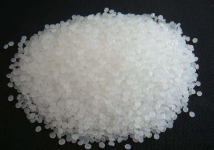read: 894 time:2025-07-02 15:03:06 from:化易天下
Understanding why the PKb of aniline is more than that of methylamine is crucial for those studying organic chemistry, particularly in the field of amines. This difference in basicity between aniline and methylamine can be attributed to several key factors, including electronic effects, resonance stabilization, and the nature of the substituents attached to the nitrogen atom. Let's break down each of these factors to understand the reasoning behind this phenomenon.
The basicity of an amine is directly related to the availability of the lone pair of electrons on the nitrogen atom. The more available the lone pair, the stronger the base, and the lower the PKb value. Conversely, if the lone pair is less available, the amine is a weaker base, leading to a higher PKb value. Therefore, to understand why the PKb of aniline is more than that of methylamine, we must consider the factors affecting the availability of the nitrogen's lone pair in both molecules.
Aniline (C6H5NH2) is an aromatic amine where the amino group (-NH2) is directly attached to a benzene ring. The lone pair of electrons on the nitrogen in aniline is involved in resonance with the benzene ring. This resonance delocalizes the electron density from the nitrogen across the aromatic ring, reducing the availability of the lone pair for protonation. As a result, aniline is a weaker base, leading to a higher PKb value.
In contrast, methylamine (CH3NH2) does not have this resonance effect. The lone pair on the nitrogen is fully available for protonation, making methylamine a stronger base with a lower PKb value. This key difference explains why the PKb of aniline is more than that of methylamine.
Methylamine benefits from the inductive effect of the methyl group. The methyl group is electron-donating, which increases the electron density on the nitrogen atom. This further enhances the availability of the lone pair for protonation, making methylamine a stronger base. The absence of significant resonance in methylamine allows it to maintain a high electron density on nitrogen, resulting in a lower PKb compared to aniline.
The aromatic nature of the benzene ring in aniline plays a crucial role in reducing its basicity. The aromatic ring's ability to stabilize the lone pair through resonance not only decreases the electron density on nitrogen but also stabilizes the molecule in its unprotonated form. This stability in the unprotonated form makes aniline less eager to accept a proton, further contributing to its higher PKb value compared to methylamine.
In conclusion, the PKb of aniline is more than that of methylamine due to the resonance effect between the nitrogen's lone pair and the benzene ring in aniline. This effect reduces the electron density on nitrogen, making aniline a weaker base. On the other hand, methylamine, with no resonance and an electron-donating methyl group, retains a higher electron density on nitrogen, making it a stronger base with a lower PKb value. Understanding these differences is essential for grasping the fundamental concepts of amine chemistry and their reactivity.

Jincheng Petrochemical's 300000 ton polypropylene plant successfully trial production, 2024 polypropylene market analysis

The ABS market remains sluggish, what is the future direction?

Market differentiation of bisphenol A intensifies: prices rise in East China, while prices generally decline in other regions

The production method and process flow of silicone acrylic lotion, and what are the common raw materials